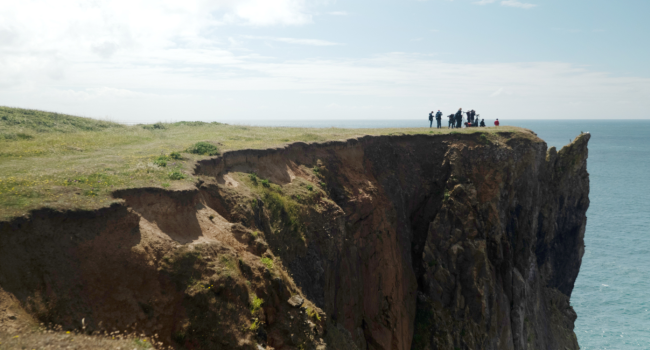Urban and coastal breeding lesser black-backed gulls (Larus fuscus) segregate by foraging habitat

Author(s): Langley, L.P., Bearhop, S., Burton, N.H.K., Banks, A.N., Frayling, T., Thaxter, C., Clewley G., Scragg, E. & Votier, S.C.
Published: July 2022
Journal: Ibis
Digital Identifier No. (DOI): doi.org/10.1111/ibi.13109
A collaboration between BTO, Natural England and University of Exeter researchers has used GPS-tracking technology to compare the movements and habitat use of Lesser Black-backed Gulls breeding at neighbouring coastal and urban colonies in Cumbria, northern England. The study found that the distance birds covered making foraging trips and the size of their 'home ranges' - the area that an individual bird uses on a daily basis during foraging, breeding and roosting activities - differed between the urban and coastal colonies and revealed a marked segregation in habitat choice.
Abstract
During the last century, several gull species have colonised towns and cities around the world, taking advantage of the abundant food, predator-free breeding habitat such as flat rooftops and urban heat island effects. These urban populations increased rapidly, leading to human-wildlife conflict in some areas due to the potential for disease transmission and perceived ‘nuisance behaviours’ such as noisy calling, nest and chick defence during the breeding season, fouling and food-snatching. The resulting calls for greater controls on urban gull numbers have coincided with marked declines in important coastal colonies, where the drivers of population decreases are still unclear but are significant enough to warrant changes in conservation status for all UK-breeding species, and make them the focus of many conservation efforts.
In order to better understand the divergent population trends of coastal and urban gulls, and to design effective conservation management programmes, we need a clear understanding of breeding gull ‘movement ecology’ - how gulls navigate moving through the space around them - in both urban and coastal areas.
In one of the first comparisons of movement ecology between neighbouring urban and coastal colonies, this study used existing GPS-tracking data to reveal the differences in movement ecology between Lesser Black-backed Gulls breeding at an urban site in Barrow-in-Furness and those at the coastal South Walney Nature Reserve - a Special Protection Area where the species is a designation feature.
The research showed that gulls breeding at the urban colony undertook shorter foraging trips and had smaller home ranges than coastal breeders. Additionally, gulls from the two colonies were segregated by foraging habitat, with coastal gulls frequenting intertidal areas whilst urban breeders foraged in urban areas that coastal breeders rarely visited.
The results highlight how the different breeding habitats are associated with significant differences in foraging habitat and range, leading to segregation between populations. These habitat-level differences in foraging ecology during the breeding season have important implications for developing targeted control and conservation measures. For instance, improved refuse management and public education programmes in urban areas could reduce food for gulls in towns and cities, potentially minimising human-gull conflict in these areas without negatively impacting coastal gulls breeding in protected areas. Finally, the study highlights how existing GPS-tracking datasets can help to address further ecological questions adding additional value beyond their initial intended purpose.








Share this page